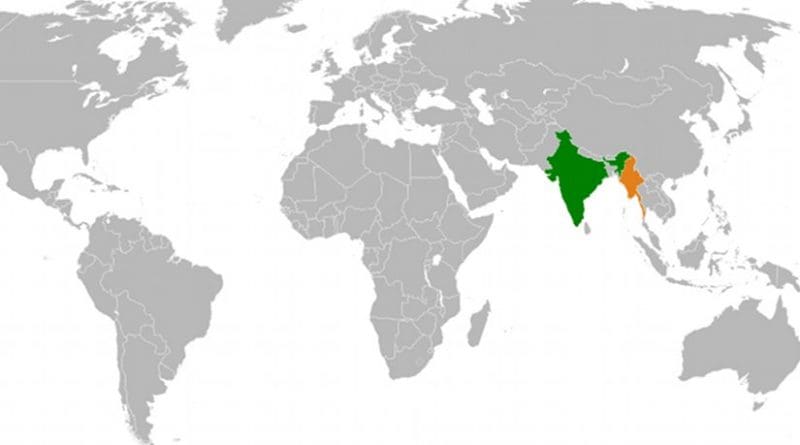India Flexes Diplomatic, Military Muscle In Burma
By Joseph Allchin
India has made serious moves to upgrade its strategic and economic positions in Burma and in the troubled tri-border area between Burma, India and China following President Thein Sein’s visit to the world’s largest democracy.
While the most public declarations to come out of the meeting surrounded the extension of $US500 million worth of credit to Burma from the Indians, Thein Sein also made deals with New Delhi on agricultural cooperation, taking the opportunity to pose next to a tractor.
Not all is calm in that relationship, however. Both sides have alleged one another of doing little to clear their territory of respective anti-government groups, with the Burmese going so far as to accuse the Indians of aiding the rebel Kachin Independence Army (KIA), whom Naypyidaw is currently fighting.
Moreover, alarm at recent reports that India is to deploy Brahmos cruise missiles to Arunachal Pradesh will do little to quell wider regional tensions. The far northestern state is claimed by China, and shares a border with Burma’s northern Kachin state where Indian rebels are believed to be sheltering.
The alleged deployment of missiles is, according to regional expert Bertil Lintner, part of a broader Indian arming of the area, with the addition of landing strips and radar. The Bhramos’ 290 kilometre range would put the Indian’s within striking distance of Lhasa in Tibet, where the Chinese are said to have a considerable arsenal.
Landing capabilities would enable the swifter mobilisation of troops to the troubled northeastern region, while better signal capabilities would improve surveillance in the remote region. This was part of what the Indian Express newspaper heralded as one of the largest single increases in Indian military spending, and would be the first missile battalion on the China border. An additional 89,000 troops would also be deployed because of “urgency showed by the army,” said the Express.
The issue of Indian rebels taking shelter in Burma was inevitably on the agenda, with more evidence that India is supplying artillery to the Burmese military in order to fight groups like United Liberation Front of Assam (ULFA) who are sheltering along the Kachin border.
Lintner says he was specifically told that this sale of weapons to Burma had taken place by Indian army personnel. Following Thein Sein’s visit, the Hindustan Times reported that India had “kept options open to supply arms and gunboats” to the Burmese.
This adds to plans by the Indians to hold more regular meetings with their Burmese counterparts. While the Burmese have been more than happy to balance out their dependence on China as a foreign patron, commentators have questioned the government’s commitment to fighting Indian insurgents, with Lintner describing alleged recent Burmese offensives against these rebels as “phantom operations.”
Perhaps in a retaliatory gesture aimed at fending off Indian accusations of Burmese inaction over rebel groups, the Burmese allegedly accused the Indians of supplying the KIA with food drops from helicopters. James Lung Dao, of the KIA’s political wing, the Kachin Independence Organisation, said he could not “verify” the reports but added that the group had no diplomatic ties with India and had no affiliations to any other armed groups.
As a result, the Burmese allegedly asked for satellite imagery of the bases within its border during Thein Sein’s trip. Both the ULFA and the People’s Liberation Army (PLA) from Manipur are believed to have a presence in Burma, with the latter furthermore rumoured to have been trained by the Chinese in Lhasa. The PLA are on their part are alleged to have trained Indian Maoist rebels in Burma.
Both outfits were mentioned in a similar leaked Indian memo that claimed they have been visited by Chinese and Pakistani agents.
Sensational releases such as this were viewed with suspicion, given their timing just prior to Thein Sein’s visit. Some observers saw the leaks as an attempt to put pressure on the Burmese president.
India for its part has also been trying to mimic China’s tactic of establishing strategic presences in key countries ringing their adversary. This has specifically included Vietnam who posses their own grievances and fears regarding China, particularly over disputed maritime boundaries in the South China Sea. The growing relationship between India and Vietnam will likely include joint navy patrols and potentially the transfer of Bhramos missiles to Vietnam. India has further been working on relations with Indonesia and Mongolia, both key nations surrounding China.
The tri-border region sees Burma in a strategic position, although questions are asked of its inability to fully appease either of its giant neighbours.

